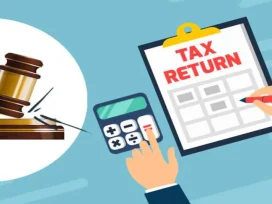
When Are Traffic Control Services Required on Site?
Traffic control services are essential for maintaining safety, order, and accessibility during any activity that disrupts normal traffic flow. Whether it’s a construction zone, utility repair, or a community event, the presence of professional traffic management can make the difference between a smooth operation and a chaotic or dangerous environment.
But when exactly are traffic control services required? Here’s a breakdown of the most common situations where they become necessary and why their role is so critical.
1. Construction and Roadwork Zones
Perhaps the most obvious setting for traffic control is during road construction. Whether it’s a small sidewalk repair or a full-scale highway project, any activity that interferes with traffic lanes, sidewalks, or public access routes requires organized traffic control.
Services may include flaggers, temporary signage, lane closures, detours, and vehicle escorts. Without these, workers and drivers face serious hazards, and traffic congestion can spiral out of control.
2. Utility and Infrastructure Repairs
Utility companies frequently dig into roads or sidewalks to access underground services such as water lines, gas mains, or telecommunications cables. These projects often involve equipment that takes up multiple lanes and may pose risks to pedestrians.
Traffic control services ensure that proper signage, cones, and flagging systems are in place to keep both workers and the public safe while minimizing disruptions.
3. Special Events and Festivals
Large-scale public gatherings like marathons, parades, street festivals, or concerts can temporarily close roads and increase pedestrian traffic. Managing this safely requires the coordination of detours, restricted access points, pedestrian lanes, and parking zones.
Local regulations usually mandate a certified traffic control plan to accompany permit applications for such events.
4. Emergency Response and Accident Scenes
When accidents or natural disasters occur, emergency responders must secure the area quickly. Professional traffic control teams assist in rerouting traffic, keeping emergency lanes clear, and protecting first responders from oncoming vehicles.
Having trained personnel manage the flow of cars and crowds during these tense situations prevents secondary accidents and ensures access for ambulances and fire services.
5. Filming and Commercial Projects
Television and film productions often need to occupy streets, sidewalks, or parking areas. Municipalities usually require a traffic management plan to be submitted and approved before filming begins.
Traffic control services step in to block streets temporarily, guide vehicles and pedestrians safely around the site, and restore normal flow when filming wraps up.
In the middle of all these activities, Salus Traffic Control services are often called upon for their expertise in safely directing traffic, complying with local and provincial laws, and minimizing delays. Their trained professionals provide on-site solutions tailored to the unique layout and timing of each project—ensuring that both workers and the public remain safe.
6. Work Near Schools, Hospitals, or High-Density Zones
Projects near sensitive or high-traffic zones—like schools, hospitals, or shopping districts—need extra precautions. These areas demand strategic planning to avoid traffic bottlenecks, delays, or confusion for pedestrians and drivers alike.
Traffic control teams coordinate with local authorities to implement safe crossing zones, restricted access areas, and designated loading or unloading points.
7. Projects Affecting Public Transit Routes
If your project or event disrupts public transportation routes—such as bus lanes or stops—you’ll likely need traffic control services to redirect both transit vehicles and passengers. This includes temporary signage, communication with transit authorities, and clearly marked alternatives for public use.
Conclusion
Traffic control services aren’t just for massive construction zones—they’re a critical safety tool for a wide range of activities that affect traffic flow. From emergency scenes and roadwork to film shoots and festivals, professionals ensure that vehicles, pedestrians, and workers can coexist safely.







